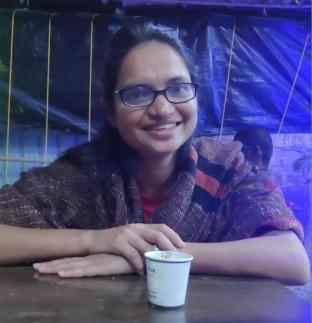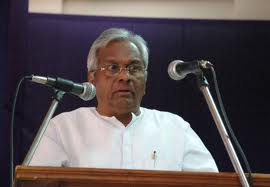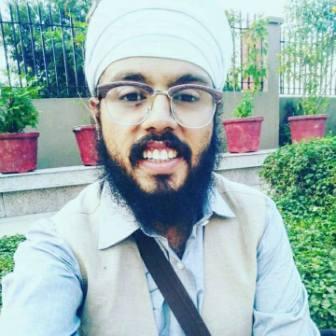Ritika Srivastava
This article is based on my everyday observations and interactions in various social spaces. It focuses on three specific contexts that show how caste-based practices remain prevalent in society. This write-up does not claim any generalisations. Instead, the episodes highlight how caste discrimination and segregation are perpetuated through the use of utensils, food, and inter-caste upper-caste marriage.
The first interaction draws from my teaching experiences A few years ago, I was teaching Bachelor of Education students about education, identity, and (in)equality. I vividly remember having conversations with them about the various social categories and prevailing notions in society, specifically related to diverse practices attached to these social categories, which include religion, caste, class, gender, language, and ethnicity.When the discussion on caste began, it was a bit challenging for me to initiate, given the diversity of caste and religious backgrounds among the students in the classroom. To start the conversation, I asked a simple question: “Could you please share if separate cups are kept at your houses for people of other castes to have tea? Please raise your hand.” Initially, the students began looking at each other hesitantly. I raised my hand first, admitting that my family practices this at our home. Seeing my hand raised, the students slowly began to raise their hands as well. Within a few minutes, everyone acknowledged their family members keep separate utensils for chai and hardly they invite other caste people for food at home. In family functions like marriage or other grand celebrations, they do not use home utensils. Later they started discussing notions related to (im)purity of utensils which is related to caste and is widely practiced in their families. The discussion did not stop there. It expanded to include topics related to food, utensils, caste, as well as religion-based everyday practices in families.
The second observation and interaction stem from my recent visit to my village home in Uttar Pradesh. The village is developed in terms of concrete roads, internet, accessible education, and connectivity to the city. One day, I made tea for my family and a few neighbours who were sitting outside the house having their daily chit-chat. As I started pouring tea into porcelain cups, a family member immediately came over and asked me to serve tea to a few people in either a glass or a paper cup. There were a few glasses kept separate from the rest of the utensils and not supposed to be mixed with everyday utensils. I refused and said, “I will not do that.” My family member started yelling at me, insisting that if I did not comply, no one would drink tea at our house. They also added that the lower caste people themselves will not drink in porcelain cups. They forced me to follow what they said by making me understand the self-imposed segregation of lower-caste people. I tried to explain that practicing this kind of segregation perpetuates the caste system, which is against the Indian Constitution. They were not willing to listen or understand. Finally, I said, “I will not do this, and I will not give tea to anybody.” I prepared the tea and left. Later, they poured the tea and distributed it according to the caste of the people sitting outside.
My third observation is based on a family that keeps separate utensils for God and humans. This family worships the child form of Krishna, called Laddu Gopal, and keeps utensils, beds, play games, and other materials specifically for the deity. They are meticulous about ensuring that God is served and has eaten first. Additionally, they do not use porcelain cups for drinking tea, believing that drinking tea in steel glasses is purer.In this particular family, one partner is a Brahmin while the other is from an upper caste but not a Brahmin. The non-Brahmin partner does not question the Brahmin partner’s practices believing the purity in practices since it is Brahmin’s belief. The observation of the episode from the same family illustrates the way intersectional caste theory operates in society. The Brahmin partner, a female, expressed that she was not willing to change her caste after marriage, citing the practice as patriarchal. However, it was observed that she often celebrated her caste and its rituals with the pride of belonging to the Brahmin. She used to refer herself, “I am Brahmin (adds her specific Brahmin caste) and SaryupaarBrahmin”. Despite her stance on not changing her caste in the name of gender equality, she insisted that her partner and other family members refrain from eating non-vegetarian food. She also encouraged the entire family to keep separate utensils and to celebrate her caste-based rituals, using the gender equality argument selectively to maintain her caste practices.
Even exogamy (marriage outside one’s social group or caste) may not necessarily foster alliances between different social groups. Instead, dominant Brahminical upper caste practices and social segregation often continue to reinforce and widen beliefs about purity, untouchability, and hierarchical inequalities. These practices perpetuate hegemonic views and maintain entrenched social divisions, counteracting any potential for equality. Additionally, the way people practice hegemonic caste codes in society is very nuanced and unquestioned because these practices have been entrenched for years and generations.
In today’s society, I have encountered people who believe that caste-based inequality no longer exists. However, three empirical episodes have shown how it continues to be practiced within families. On one hand, while people demand merit-based selections and opportunities, they often overlook the realities of everyday life. On the other hand, even if a lower caste person achieves a higher position based on merit, will that merit enable other lower caste individuals to drink tea from the same cups as upper caste people, use the same steel glasses, or sit as equals with them? Furthermore, will marriage be based on understanding and acceptance of diverse caste and class-based food practices, without imposing Brahminical upper caste rituals on lower caste partners? As long as we keep separate cups for chai, separate utensils for different castes, and believe in one group’s dominance over another, we perpetuate caste discrimination, uphold upper caste supremacy, and fail to address inequality.
~~~










